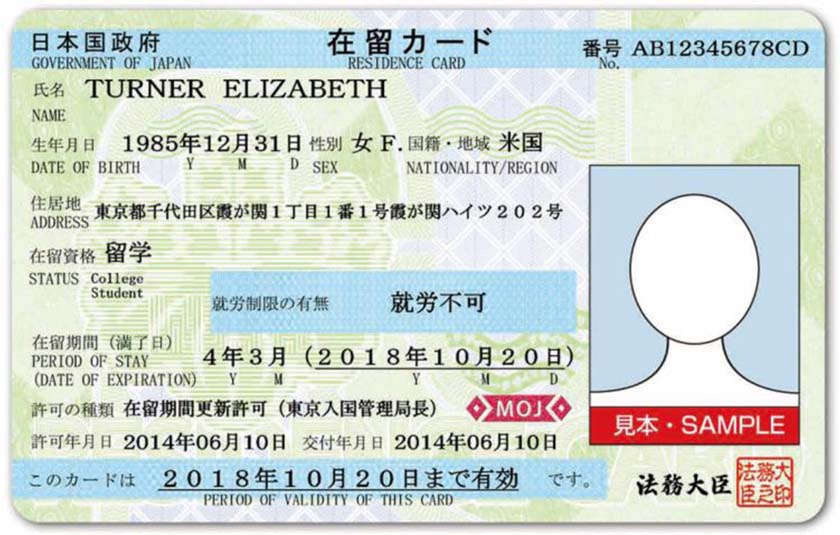- SHOWA Medical University
- International Exchange
- Useful Information for International Visitors
Useful Information for International Visitors
For our international exchange students and post-graduate international research/training fellows, this page provides you with information to help you get started in your life at SHOWA Medical University and in Japan. We highly recommend that you read all of the information provided here before your arrival to Japan.First Steps
For our visitors who will live in Japan for more than 90 days, it is important to register and sign-up for the basic service all citizens will need. The staff at the International Exchange Center will help the fellows and students staying in our dormitories or in Shinagawa City to complete these steps during your first days here!Resident Registration and Residence Card
At your port entry into Japan, foreign residents who live in Japan for 90 days or longer will receive a Residence Card ("zairyuu kahdo";在留カード). After you receive your residence card, you must register with it as a residence at the Shinagawa City office.
When you return to your home country, you must give back the Residence Card to the Japan Immigration Office at an international Airport.
When you return to your home country, you must give back the Residence Card to the Japan Immigration Office at an international Airport.
 Residence card
Residence card※reference source:immigration services agency of japan
National Health Insurance (NHI)
Foreign residents who live in Japan for 90 days or longer must purchase National Health Insurance (NHI). You can sign up for this insurance at the city office when you register. NHI covers 70% of medical and dental costs and it includes consultation with doctors/dentists, treatments, prescription drugs, and hospitalizations.Bank Account
To open an bank account at the Japan Post bank, you will need: 1) Passport, 2) Residence Card or National Health Insurance Card, 3) Hanko (Japanese personal seal, if you have one).
Orientation Packet
All students will receive this packet and an orientation upon arrival. However, we highly recommend that visitors download and read this packet before their arrival!Living Guide
Council of Local Authorities for International Relations (CLAIR) – Multilingual information resources covering life in Japan and what to do during a natural disasterMobile SIM Cards
Unfortunately, it is very difficult for foreign visitors to make a typical subscription phone plan, because the standard contract length is at least several months and you need a Japanese bank account. Instead, prepaid SIM cards are the easiest way to access the internet through your phone and make phone calls in Japan. Here are some helpful links that provide more information, but please note that the IEC does not endorse any of the products, nor can we provide advice on which specific company or plan is best for you.Nippon SIM for Japan
Prepaid SIM card and eSIM plans that you can order online and ship to locations in Japan or overseas (separate fees for overseas shipping)airalo
eSIM plans at affordable pricesFree Wi-Fi/Internet
All of SHOWA Medical University (dormitories, campuses, and hospitals) provide free internet/Wi-Fi access to international visitors. However, outside of SHOWA Medical University it is relatively difficult to find a free Wi-Fi in Japan. Several of the train companies (include the Tokyo Metro) and individual stores have begun to provide free Wi-Fi, but the coverage is still very patchwork. The following information might be useful.Japan Connected-Free Wi-Fi
Free phone app that lets you find and access free Wi-Fi spots offered by contractors throughout japan (registration required)FREE Wi-Fi Passport
Free Wi-Fi service for 2 weeks provided by the SoftBank, a large Japanese Telecommunications companyTransportation
The Metropolitan City of Tokyo has a well-developed network of railways (JR and other private railways), subways and buses running in all directions. It can seem overwhelming at first, but after a few times, most visitors get used to using Tokyo’s transportation system. If you do get lost or confused, ask the nearest station worker ☺. If you want to get out of the city, regional trains and the Shinkansen (bullet train) are reliable and convenient. Here are also some helpful links:Jorudan
an ESSENTIAL website that provides the quickest and easiest train route between any two stations.Tokyo Subway Map
Downloadable maps of the Tokyo Metro Subway, available in several languages.Tokyu Rail Way
A private railway company that operates the local lines around SHOWA Medical University’s Hatanodai and Senzoku campuses.JR-East
Information on purchasing, reading, and types of tickets (including Shinkansen) on East Japan Rail Way (JR-East), the main regional railway company connecting Tokyo to the rest of Japan.Airport Limousine
Limousine bus service to/from Haneda and Narita airport.Pasmo/Suica(Daily necessities)
A prepaid card (such as JR’s SUICA or the PASMO) is a convenient way to get on the train because you do not have to use the ticket machine for each ride or worry about difficulties in transferring to a new line operated by a different railway company. In addition to using them on trains and buses, you can also use them to purchase goods and services from stores such as convenience stores that accept electronic money payments. Both of them function basically the same, so choose whichever one is most convenient to purchase.*Due to an IC chip shortage, it is currently difficult to purchase a Pasmo/Suica card*
Below is information about the few places still selling Pasmo/Suica cards as well as how to use digital versions of the cards:
Below is information about the few places still selling Pasmo/Suica cards as well as how to use digital versions of the cards:
Tokyo Metro
JR (Japan Railway)
Shopping and Sightseeing
There are many shopping opportunities located around Hatanodai as well as the wider Tokyo area. Please refer to the maps in your Orientation Packet for specific shops located nearby.For ideas of places to see in and around Tokyo, please take a look at the links below, or ask us at the International Exchange Center. We have tour books available as well as a lot of personal recommendations.